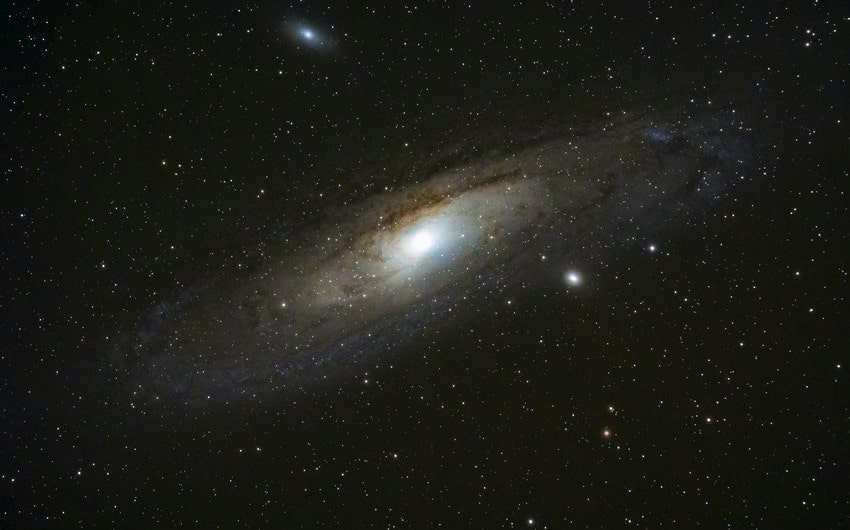60 Fascinating Scientific Questions to Spark Your Curiosity
Curiosity drives us to explore the world and ask questions about how things work. Whether you’re pondering the mysteries of space, nature, or everyday phenomena, scientific questions are a great way to spark wonder and deeper understanding.
From the smallest atom to the farthest galaxy, there’s always something new to learn. This collection of intriguing questions will get you thinking, whether you’re looking for fun conversation starters or simply want to expand your knowledge. Let’s dive into the fascinating world of science and see where your curiosity takes you!
Fun and Simple Scientific Questions
Here are a few straightforward questions that explore the world around us. Each answer includes extra details to make the concepts even more fascinating!

1. Why is the sky blue?
The sky appears blue because of a phenomenon called Rayleigh scattering. When sunlight enters Earth’s atmosphere, blue light waves, which are shorter, scatter more than other colors, making the sky look blue to our eyes. During sunrise and sunset, the sun is lower on the horizon, so more blue light scatters out, letting the reds and oranges shine through. This is why the sky can also appear vibrant in different colors at dawn and dusk.
2. How do birds fly?
Birds can fly thanks to their wings’ unique shape, called an airfoil. The air moves faster over the top of their wings than underneath, creating lift. Birds also have hollow bones that make them lighter, and they can angle their wings to change speed and direction. This combination of strong chest muscles and aerodynamic shape lets birds soar, dive, and glide with ease.
3. Why do we have seasons?
Seasons occur because Earth is tilted on its axis as it orbits the sun. When one hemisphere tilts toward the sun, it experiences summer, while the other hemisphere, tilted away, experiences winter. The angle of sunlight also changes, making it stronger in summer and weaker in winter. This cycle repeats each year, giving us spring, summer, fall, and winter.
4. Why does the ocean taste salty?
The ocean tastes salty because it contains dissolved salts, mainly sodium chloride. These salts come from rocks on land that erode and wash into the sea, as well as volcanic activity and mineral deposits on the ocean floor. Over millions of years, these salts have accumulated in the ocean, making it much saltier than rivers and lakes.
5. Why do we sneeze?
Sneezing is a reflex to clear irritants from the nose, like dust, pollen, or a strong smell. When tiny particles irritate the nasal lining, the body sends a quick burst of air through the nose to expel them. Sneezing can reach speeds of up to 100 miles per hour, helping keep the respiratory system clean and protected from potential infections.
6. What causes rain?
Rain forms when water vapor in clouds cools and condenses into tiny droplets that combine to form larger drops. When these drops become heavy enough, they fall to the ground as rain due to gravity. This process, called the water cycle, also includes evaporation, condensation, and precipitation, which continually moves water through the environment.
7. Why do we see lightning before we hear thunder?
We see lightning first because light travels faster than sound. Lightning is nearly instantaneous, but thunder takes time to reach us because sound travels at around 1,100 feet per second. By counting the seconds between the flash and the thunder, you can estimate the distance of a storm, with every five seconds representing about a mile.
8. Why do some animals hibernate?
Hibernation helps animals survive cold winters when food is scarce. By slowing their metabolism and conserving energy, they can survive long periods with little or no food until the environment warms up again. During hibernation, an animal’s heart rate and body temperature drop significantly, helping them save energy until spring.
9. How does a rainbow form?
A rainbow forms when sunlight passes through raindrops in the air. The light is refracted (bent), split into colors, and then reflected inside the droplet before it exits, creating a spectrum of colors in the sky. Each raindrop refracts light at a slightly different angle, creating a circular arc of vibrant colors that we see as a rainbow.
10. Why does popcorn pop?
Popcorn pops because each kernel has water inside. When heated, the water turns to steam, creating pressure until the outer shell bursts, turning the kernel inside out and creating the fluffy treat we enjoy. The ideal moisture level in popcorn is around 14%, which gives the kernel enough steam pressure to explode perfectly when heated.
Thought-Provoking Scientific Questions
These thought-provoking scientific questions delve a little deeper, encouraging us to think critically and ponder complex concepts. Each answer includes extra context to expand understanding.

1. What is time, and does it have an end?
Time is a measurement of the sequence of events, often thought of in relation to the past, present, and future. It’s a fundamental aspect of the universe, but scientists are still debating its nature. Some theories suggest time might have started with the Big Bang, while others propose it may continue indefinitely or could even loop back on itself in some unknown way.
2. Can humans survive on other planets?
Humans would need air, water, food, and protection from extreme temperatures and radiation to survive on other planets. Mars is currently the most studied for potential human habitation, but the challenges are immense. Scientists are exploring solutions like artificial habitats, domed cities, and advanced technology to make this dream a reality in the future.
3. Are there other universes beyond our own?
The idea of multiple universes, or the multiverse theory, suggests there could be an infinite number of universes beyond ours. While it’s a fascinating concept, scientists have yet to find concrete evidence of other universes. The question remains one of the biggest mysteries in science and could reshape our understanding of reality if ever proven.
4. How does consciousness arise in the brain?
Consciousness is the state of being aware of ourselves and our surroundings, but scientists are still unsure how it arises. Some theories suggest it comes from complex brain processes, while others propose consciousness could be a fundamental property of the universe. Understanding consciousness could unlock answers to how we perceive and interact with the world.
5. Can we travel faster than light?
According to Einstein’s theory of relativity, nothing can travel faster than light in a vacuum, which moves at approximately 299,792 kilometers per second. However, some scientists are exploring theories like warp drives and wormholes that might allow for faster-than-light travel, though these ideas remain hypothetical and face huge scientific challenges.
6. Why do we dream?
Dreams are thoughts, images, and sensations that occur during sleep, but scientists are still unsure why they happen. Some theories suggest dreams help us process emotions or solve problems, while others view them as random brain activity. Studying dreams could give insight into human cognition, memory, and mental health.
7. What happens inside a black hole?
Black holes have such intense gravity that not even light can escape them, and their interiors remain a mystery. At the center of a black hole is a point called a singularity, where gravity is thought to be infinite, and space and time might break down. Scientists use theories in quantum mechanics and relativity to explore this question, but direct observation is impossible.
8. Could artificial intelligence ever truly think and feel?
Artificial intelligence (AI) is becoming more advanced, but whether it can truly “think” or “feel” is still debated. AI can mimic human thought and emotions, but it lacks consciousness and self-awareness. Some researchers believe future advancements could lead to conscious AI, while others argue that human experiences are uniquely biological.
9. Is there a limit to human knowledge?
While humans have made incredible advancements, there may be limits to what we can understand about the universe. Our brains and technology may not be capable of comprehending certain complexities, much like other animals are limited in their understanding. This question touches on the boundaries of human potential and the unknown.
10. How did life on Earth begin?
The origin of life on Earth remains one of science’s greatest mysteries. Some theories suggest life began in the ocean near hydrothermal vents, while others propose it started on land in a “primordial soup” of organic molecules. Understanding how life began could help us identify where else life might exist in the universe.
Nature and Environment Scientific Questions
These questions explore the wonders of our natural world, focusing on ecosystems, animal behavior, and environmental science. Each answer reveals the fascinating complexity of Earth and its ecosystems.

1. How do trees communicate with each other?
Trees communicate through an underground network of fungi known as mycorrhizal networks, or the “Wood Wide Web.” Through these networks, trees can send nutrients, signals, and even warning messages about dangers like pests. This collaboration helps forests thrive as interconnected communities.
2. Why do animals migrate?
Animals migrate to find food, breeding grounds, or better climates, often covering vast distances. Migration is driven by survival instincts and environmental changes, like seasons and food availability. Birds, fish, and mammals have adapted remarkable strategies to navigate these long journeys.
3. How does pollution affect the food chain?
Pollution, especially chemical and plastic waste, disrupts food chains by harming plants and animals at all levels. For example, microplastics in the ocean are eaten by small fish, which are then eaten by larger predators, introducing toxins throughout the food web. Pollution can lead to the decline of entire ecosystems over time.
4. How do plants grow toward light?
Plants grow toward light in a process called phototropism, where plant cells grow faster on the side away from the light source. This response allows the plant to maximize sunlight for photosynthesis, which it uses to make energy. Phototropism helps plants compete for light in dense forests and other environments.
5. Why do some animals have camouflage?
Camouflage helps animals blend into their surroundings to avoid predators or sneak up on prey. This adaptation is essential for survival and has evolved in many species, from insects to mammals. Each species’ camouflage pattern is uniquely suited to its habitat, like a chameleon in a forest or a polar bear in the snow.
6. How does climate change impact biodiversity?
Climate change affects biodiversity by altering habitats, food sources, and breeding conditions for many species. Rising temperatures, extreme weather, and ocean acidification force animals to migrate, adapt, or risk extinction. Preserving biodiversity is essential because each species plays a role in maintaining healthy ecosystems.
7. Why do leaves change color in the fall?
Leaves change color in the fall due to reduced chlorophyll, the green pigment essential for photosynthesis. As chlorophyll breaks down, other pigments like carotenoids and anthocyanins become visible, creating reds, yellows, and oranges. This process is a survival strategy for trees as they prepare for winter by conserving resources.
8. How do ecosystems maintain balance?
Ecosystems maintain balance through interdependent relationships between organisms and their environment. Producers, consumers, and decomposers each play a role in nutrient cycling and energy flow. Disruptions, such as the loss of a species, can impact the entire ecosystem, highlighting the importance of biodiversity.
9. What causes earthquakes?
Earthquakes are caused by sudden shifts in tectonic plates that make up Earth’s crust. These plates move slowly over time, but stress can build up until it’s released as an earthquake. The location and intensity depend on factors like fault lines and plate boundaries, making certain areas more prone to seismic activity.
10. Why are bees important to the environment?
Bees play a critical role in pollinating plants, including many of the crops humans depend on for food. Their pollination efforts support biodiversity by helping plants reproduce, which in turn sustains various animal species. Protecting bees is crucial for maintaining balanced ecosystems and food supplies.
Space and Astronomy Scientific Questions
Space and astronomy questions encourage us to look beyond Earth and wonder about the vastness of the universe. Each answer sheds light on some of the mysteries of space.

1. How big is the universe?
The observable universe is about 93 billion light-years in diameter, but it’s likely much larger—potentially even infinite. Scientists believe it’s expanding, meaning galaxies are moving farther apart. Because of this expansion, there may be parts of the universe we will never see, even with the most powerful telescopes.
2. Why do stars shine?
Stars shine because they undergo nuclear fusion, a process that combines hydrogen atoms to form helium, releasing massive amounts of energy. This energy travels to the star’s surface as light and heat. Our sun, for example, is a star that produces enough energy to light and warm Earth from 93 million miles away.
3. What are black holes?
Black holes are regions of space with such intense gravity that not even light can escape. They form when massive stars collapse under their gravity, creating a singularity with infinite density. Black holes continue to fascinate scientists, as their properties challenge our understanding of space and time.
4. Why do we have phases of the moon?
The moon has phases because of its orbit around Earth and how sunlight hits it. As the moon orbits, we see different portions illuminated, creating phases like the new moon, full moon, and crescent. The cycle takes about 29.5 days, giving us a new phase every few days.
5. How do planets stay in orbit around the sun?
Planets stay in orbit due to the balance between the sun’s gravitational pull and their forward motion. Gravity pulls the planets toward the sun, while their speed keeps them from crashing into it, resulting in stable orbits. This principle, discovered by Isaac Newton, is key to understanding celestial mechanics.
6. What is a supernova?
A supernova is a powerful explosion that occurs when a massive star reaches the end of its life and collapses. The explosion releases immense energy, briefly outshining entire galaxies. Supernovae distribute elements like iron and carbon into space, which are essential for forming planets and life.
7. Is there life on other planets?
Scientists haven’t found direct evidence of life on other planets, but some believe it’s possible, given the vast number of planets in our galaxy alone. Scientists search for signs of life on Mars and moons like Europa, which have conditions that might support microbial life.
8. What is a galaxy?
A galaxy is a massive collection of stars, gas, dust, and dark matter bound together by gravity. The Milky Way, our galaxy, has hundreds of billions of stars and is one of trillions in the universe. Galaxies vary in size and shape and often contain complex systems of planets and nebulae.
9. Why are there different types of stars?
Stars differ in size, temperature, color, and lifespan based on their mass and composition. Small, cool stars are red, while massive, hot stars appear blue. As stars age, they go through stages, eventually becoming supernovae, neutron stars, or black holes, depending on their initial mass.
10. What are constellations, and how are they formed?
Constellations are groups of stars that form recognizable patterns in the sky. Ancient civilizations named them after myths, animals, and objects, helping them track seasons and navigate. Although stars in a constellation appear close from our viewpoint, they can be light-years apart.
Physics and Chemistry Scientific Questions
Physics and chemistry explore the fundamental principles of matter and energy. These questions delve into the building blocks of our physical world.

1. What is gravity?
Gravity is the force that attracts objects toward one another, keeping us grounded and holding planets in orbit. Discovered by Isaac Newton, gravity is one of the four fundamental forces of nature. Its strength depends on mass, which is why Earth’s gravity pulls objects toward its center.
2. How does electricity work?
Electricity is the flow of electrons through a conductor, typically a wire. It powers everything from light bulbs to computers by moving charged particles. This movement creates energy, which can be used for heat, light, or motion, depending on the device.
3. What is an atom?
An atom is the basic unit of matter, consisting of a nucleus with protons and neutrons and surrounded by electrons. Atoms are the building blocks of everything around us, from the air we breathe to the cells in our bodies. They combine to form molecules, which make up all substances.
4. How does a chemical reaction happen?
A chemical reaction occurs when atoms or molecules rearrange to form new substances, either by breaking or forming bonds. Reactions can release or absorb energy, as in burning wood or cooking food. They are fundamental to everything from digestion to photosynthesis.
5. What is the speed of light?
The speed of light in a vacuum is about 299,792 kilometers per second (186,282 miles per second). This speed is considered a universal constant and serves as the fastest possible speed in the universe, affecting time and space.
6. How does sound travel?
Sound travels as vibrations through a medium, such as air, water, or solids, in the form of waves. It moves faster through denser materials like water and even faster through metals. This is why sound underwater sounds different and why solid objects can amplify vibrations.
7. What is quantum mechanics?
Quantum mechanics is the branch of physics that studies particles on the smallest scales, such as electrons and photons. It reveals unusual behaviors like particles existing in multiple states at once. Quantum mechanics challenges our understanding of reality and has applications in technology, like computers.
8. Why does ice float on water?
Ice floats on water because it is less dense than liquid water. As water freezes, its molecules arrange in a crystalline structure that takes up more space, making it less dense. This unique property of water allows ice to float, which insulates bodies of water and supports aquatic life.
9. What is a molecule?
A molecule is a group of two or more atoms bonded together, forming the smallest unit of a chemical compound. Molecules make up everything around us, from the water we drink (H₂O) to the oxygen we breathe (O₂). Chemical bonds between atoms determine the molecule’s properties and behavior.
10. What causes magnets to attract or repel?
Magnets attract or repel due to the alignment of electrons in atoms, creating magnetic fields. Opposite poles (north and south) attract, while like poles repel. Magnetism is a fundamental force of nature and is used in everything from compasses to electric motors.
Science “What If” Questions
These “What If” questions combine imagination with scientific concepts, offering fun and creative ways to explore possibilities that could expand our understanding of the world.
1. What if the Earth stopped rotating?
If Earth stopped rotating, one side would face the sun constantly, creating extreme heat, while the other would be in permanent darkness and cold. This imbalance would drastically alter the climate and likely make most of the planet uninhabitable over time.
2. What if humans could breathe underwater?
If humans could breathe underwater, we could explore oceans freely, uncovering underwater ecosystems and resources. Cities and communities might even be built underwater. However, evolution would require other adaptations to withstand pressure and cold temperatures in deep ocean areas.
3. What if the sun suddenly disappeared?
If the sun disappeared, Earth would be plunged into darkness and extreme cold within hours. Photosynthesis would stop, leading to food shortages, and temperatures would plummet, eventually making the surface uninhabitable. Earth would orbit aimlessly, drifting through space without the sun’s gravitational pull.
4. What if we could travel back in time?
Time travel could allow us to learn from the past and observe historical events, but it could also introduce complex paradoxes, like the possibility of changing the present. This remains a theoretical concept with debates on its feasibility and the potential impact on reality.
5. What if Earth had rings like Saturn?
If Earth had rings, they would be visible from many locations, creating spectacular views. The rings could alter our climate by casting shadows on certain regions, and the debris could interfere with satellites. It would change our night sky and affect how we view astronomy.
6. What if we could communicate with animals?
If we could communicate with animals, we might understand their needs and behaviors better, improving conservation efforts and our relationships with pets. This could lead to ethical questions about animal rights and influence how we interact with ecosystems and wildlife.
7. What if we found another Earth-like planet?
Discovering an Earth-like planet could open the possibility of future human settlement or study of alien life. However, challenges like travel distance, planetary conditions, and ethical questions about exploring inhabited worlds would arise, making it a monumental scientific and philosophical discovery.
8. What if gravity didn’t exist?
Without gravity, everything on Earth, including air, water, and people, would float freely into space. Our planet would likely disintegrate as objects drifted away, making life impossible. Gravity is essential to the structure of the universe, from galaxies to planets.
9. What if humans had never invented the wheel?
Without the wheel, transportation, technology, and infrastructure would look drastically different. Our progress in agriculture, construction, and even space exploration would be severely limited, impacting nearly every aspect of modern society.
10. What if we could control the weather?
If we could control the weather, we could prevent natural disasters, ensure rain for crops, and manage global climate. However, it could also lead to ethical dilemmas about who controls the weather and unintended environmental consequences from tampering with natural systems.
Why Asking Scientific Questions is Important
Asking scientific questions is at the heart of discovery and innovation. It’s through curiosity and inquiry that we advance our understanding of the world, from the smallest particles to the largest galaxies. Here’s why asking these questions is so essential:
1. Fuels Curiosity and Exploration: Scientific questions encourage us to dig deeper and explore the unknown. They spark curiosity, motivating us to investigate how things work and why phenomena occur. Whether it’s wondering why the sky is blue or how black holes form, these questions push the boundaries of our knowledge and keep our minds engaged with the wonders of the universe.
2. Promotes Critical Thinking and Problem Solving: When we ask scientific questions, we engage in a process of critical thinking. We analyze information, challenge assumptions, and think logically about potential solutions. This type of questioning develops problem-solving skills, helping us tackle complex challenges in both science and everyday life.
3. Advances Human Knowledge: Many of the greatest scientific discoveries began with a simple question. From the theory of evolution to the development of the internet, asking the right questions has led to breakthroughs that have transformed society. The process of inquiry allows us to build on existing knowledge, refine theories, and uncover new truths that propel humanity forward.
4. Encourages Innovation and Progress: Scientific questions drive technological advancements and innovation. By asking “How can we make this better?” or “What if we tried this?”, scientists, engineers, and thinkers create solutions to real-world problems. These innovations improve our quality of life, from medical advances to renewable energy technologies, shaping a better future.
5. Deepens Understanding of the Natural World: Our planet and the universe are filled with complexities, many of which remain unexplored. Asking scientific questions helps us gain a deeper understanding of the natural world, from ecosystems and animal behavior to the physics of space. This knowledge is vital for preserving our environment and making informed decisions about how we interact with nature.
6. Inspires Lifelong Learning: The more we ask questions, the more we learn. Scientific inquiry isn’t limited to scientists or classrooms; anyone can participate in the process of asking questions and seeking answers. This mindset inspires a lifelong love of learning, encouraging us to remain curious and open to new ideas throughout our lives.
7. Supports Evidence-Based Decision Making: Asking scientific questions encourages us to rely on data and evidence rather than assumptions or opinions. This approach helps us make informed decisions, whether it’s about health, the environment, or technology. Evidence-based thinking also combats misinformation, allowing us to separate fact from fiction in a world full of complex information.
8. Helps Solve Global Challenges: From climate change to disease prevention, many of today’s global challenges can only be addressed by asking and answering scientific questions. Research into these issues provides the foundation for policies and solutions that can make a real difference. Without scientific inquiry, we would be less equipped to tackle the pressing issues facing humanity.







